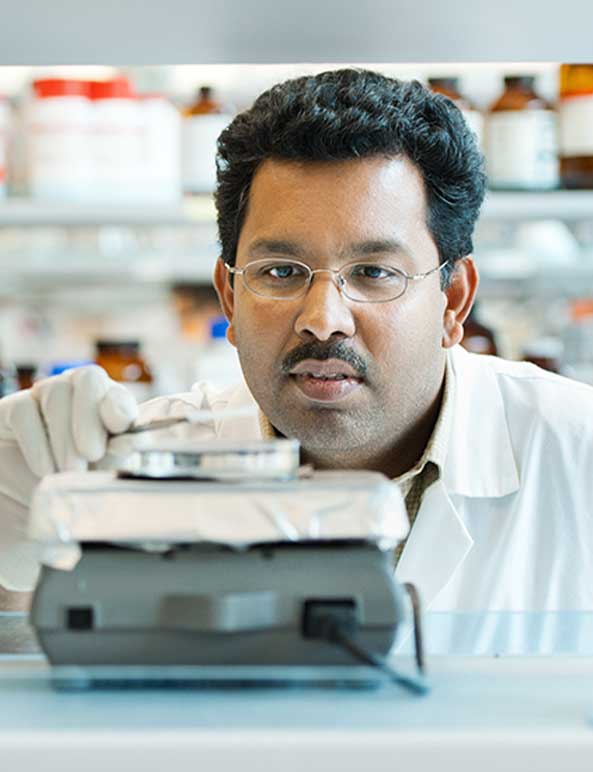
UBC Faculty of Medicine researchers have developed a groundbreaking coating that could make medical devices safer for millions of patients, reducing the risks associated with blood clots and dangerous bleeding.
The new material, designed to mimic the natural behaviour of blood vessels, could allow for safer use of blood-contacting devices like catheters, stents, blood-oxygenation machines and dialysis machines—especially in cases where blood clots are a significant concern.

“This discovery could be a transformative step in the development of safer medical devices,” said Dr. Jayachandran Kizhakkedathu, a professor of pathology and laboratory medicine and Tier 1 Canada Research Chair in Immunomodulation Materials and Immunotherapy who led the study out of the Centre for Blood Research at UBC. “By designing a coating that mimics the body’s natural approach to preventing clots, we’ve created a solution that could dramatically reduce the need for risky blood thinners before and after patients use these devices.”
Thrombosis, or clot formation, is a major challenge when blood-contacting devices are used. Unlike natural blood vessels, these devices can trigger clotting by activating specific proteins in the blood. Blood clots can obstruct the device, disrupting treatment, or lead to severe complications such as stroke and heart attack.
Doctors often prescribe high doses of blood thinners to prevent clots on these devices, but this approach increases the risk of dangerous bleeding—a trade-off that many patients and clinicians would rather avoid.
The newly developed coating offers a promising alternative. It’s engineered to imitate how blood vessels function—encouraging normal blood flow without triggering clot formation. Imagine the coating as a “soft barrier” on a device that attracts a key blood protein but keeps it from activating the clotting process.
“By interacting with this protein in a controlled way, the coating prevents it from sparking a cascade of events that lead to clot formation,” said Dr. Haifeng Ji, a Michael Smith Health Research BC postdoctoral fellow at the Centre for Blood Research and first author of the study.
In lab and animal studies, the coating demonstrated significant reductions in clot formation on device surfaces, without the use of blood thinners and without affecting the normal clotting functions elsewhere in the body.

“One of the most surprising insights was that controlling the interaction between the coating and specific blood proteins could prevent clotting without disrupting the body’s natural balance,” Dr. Kizhakkedathu said. “This shows us that mimicking the body’s own mechanisms, rather than simply repelling blood components, is key to truly biocompatible device design.”
The innovation comes as demand for blood-contacting devices continues to rise. In the U.S. alone, millions of vascular catheters are placed each year, and hundreds of thousands of patients depend on devices like dialysis machines to maintain their health.
Looking ahead, the research team plans to explore how this innovative coating could be further optimized and applied to a broader range of blood-contacting devices. Key questions remain about how the coating interacts with other blood proteins and cells, and whether the coating interacts with coagulation proteins through single-layer or multi-layer designs.
Additionally, the team is interested in understanding whether this approach could eventually be adapted to address other blood-related complications, such as inflammation or infection, in long-term medical implants.
By delving deeper into the biological mechanisms that make this coating so effective, future studies could pave the way for a new generation of medical devices that not only prevent clotting but integrate seamlessly with the body’s natural processes.
The findings were published today in Nature Materials.
This article was originally published on UBC News.